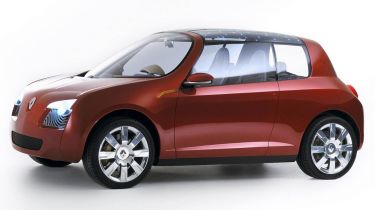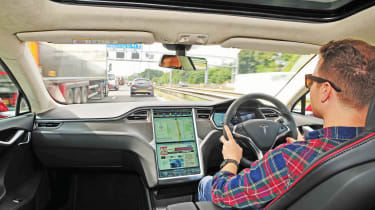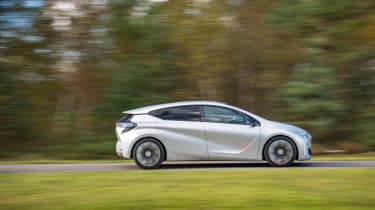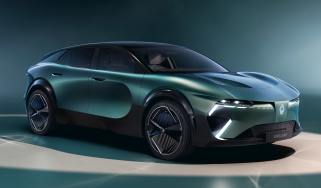Renault is working on a back-to-basics supermini
Secret Renault ‘Value Up’ concept car apes Citroen C4 Cactus with simple underpinnings and hi-tech Tesla-inspired interior

Renault is working on a whole new type of supermini to sit alongside the Clio, that uses cost-effective underpinnings but a more hi-tech interior. Deep in the bowels of Renault’s innovations centre near Paris, we were shown a full prototype of the ‘Value Up’ concept, but weren’t allowed to take any pictures. The car you see here - the 2005 Zoe concept - is for illustration purposes only because it used a similar back-to-basics approach. Originally devised in 2011 by Renault’s LCI think-tank (a crack team of 40 designers, engineers and researchers tasked with finding, and building, future mobility solutions) the Value Up concept is designed to cost roughly the same as the Clio, but by using a new cost-effective ‘A-entry’ platform and low-powered engines it frees up manufacturing costs to be spent on a more hi-tech interior.
Renault Value-Up concept: compact and lightweight
Weighing in at just 830kg, it should be economical on fuel, and early projections suggest a version with a 1.0-litre three-cylinder engine would emit around 100g/km of CO2, while a possible plug-in hybrid variant would emit 45g/km of CO2 – both would use a robotised manual gearbox as seen in the Citroen C4 Cactus. Measuring around 3.8m in length, the Value Up concept is larger than a Twingo but smaller than a Clio, but like the C4 Cactus features full-width bench seats in the front and back to create a laid back atmosphere. Natural materials are used throughout – including wood door trims and bamboo to strengthen the front crash structure – while hexagonal glass sections in the roof flood the interior with light.
Advanced interior: Renault Value-Up
The real breakthrough, though, is the fully digital dash design including two seven-inch LCD screens, one replacing the instrument cluster and one to the left of the steering wheel. The rest of the dash is replaced by two enormous widescreen 15.9-inch LCD screens sitting side by side (in a landscape orientation compared to the portrait screen in the Tesla Model S pictured below), one in the centre of the dash and one directly in front of the passenger.

These are fully interactive, so any of the controls – from the air-con to the wing mirror adjustment switches - can be swiped across to anywhere on the screens. A tablet can be used to control all of the functions, too, or to watch a video separately in the back. Passengers can also watch films on the screen in front of them, but a filter activates automatically to ensure the driver can’t see that section of the screen and become distracted. According to Solen Kerleroux, an electronic engineer who worked on the new interior the technology works perfectly, can be integrated with both Apple Car Play and Android Auto, and could be seen on a production car within two to three years if the green light was given now. In terms of exterior design, the Value Up’s proportions bear a striking resemblance to the Renault 5, with short overhangs front and rear, a bluff nose and both front and rear windscreens sloping in towards the centre line of the car. It has a five-door layout, with rear-hinged rear doors to improve accessibility, blacked out A, B and C-pillars to create a MINI-esque floating roof and see-through sections in the door to boost visibility and light in the interior.
Renault: "offering solutions to modern trends"

According to Gilles Lallement, Director of the LCI, while the EOLAB concept (pictured above) was all about displaying the very latest technical innovations, the Value Up is about applying ideas and offering solutions to modern trends like urbanisation, female drivers and younger customers. And now for the bad news – the Value Up is purely an internal prototype and there are no plans to show it, in its current form at least, at any international motor shows. However, as well as certain elements such as the hexagonal roof, front bench and use of natural materials filtering down into a variety of future production models, Serge Mouangue, LCI’s head of product strategy, hasn’t ruled out a direct production version in the future. “This is just a prototype now, a laboratory, and it won’t be produced as it is,” Mouangue explained. “But we will present the car internally and to the public and see what they say and how they react, then use these comments in a future vehicle.”
Do you like the idea of a back-to-basics small Renault? let us know your thoughts in the comments section below...
Find a car with the experts





